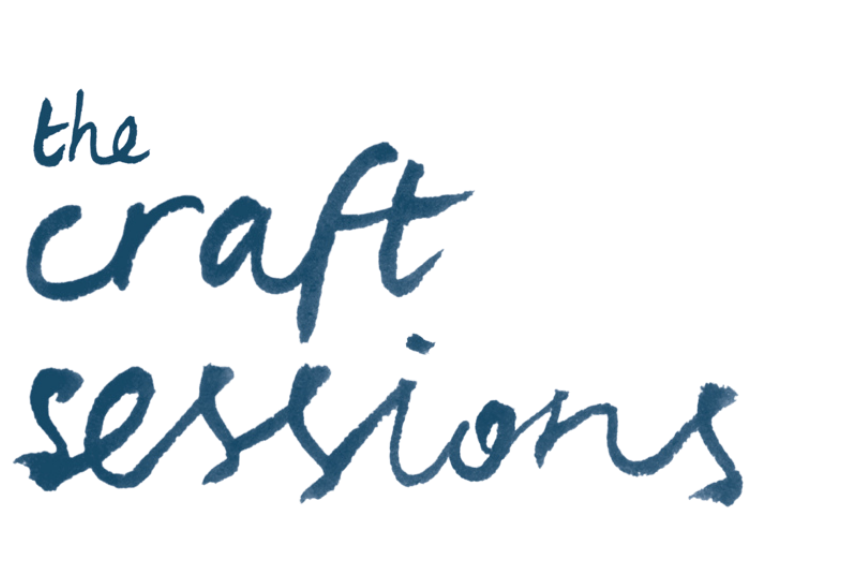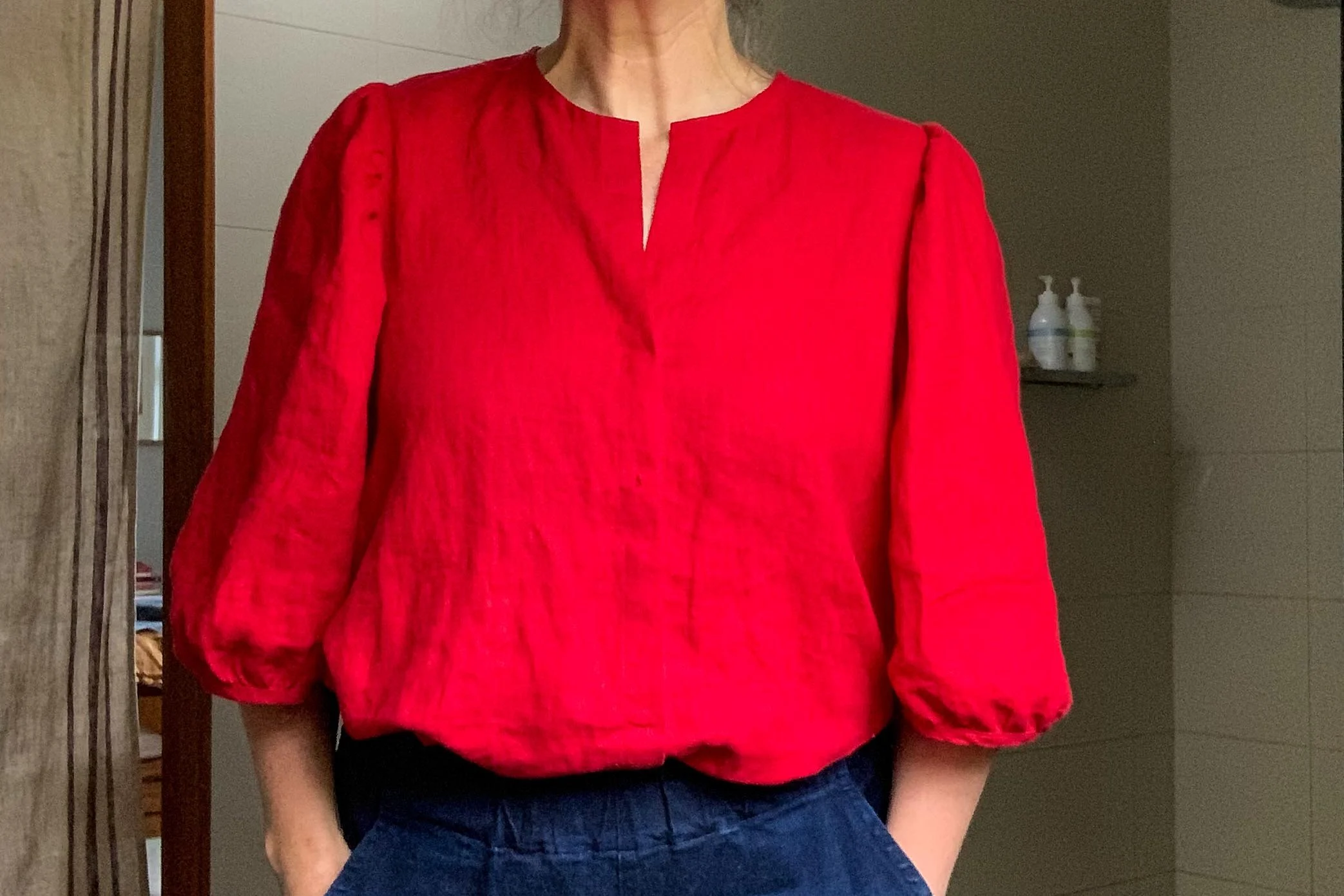I just finished James II - after I shrunk James I in a tragic shrinking accident - and this time around it is a stonking success. The fit is better and the neckline (which in version one was a little bit wonky) is perfect. Which lead me to think about what is involved in getting your sweater to fit.
So today I really wanted to talk about fit, as for me, this jumper represents what I have learned over my ten years of knitting. I wrote about fit a little in my how to choose a sweater pattern post, and as part of that post I wrote about all my many (many) mistakes. But these days it's exciting to look back, as I don't make as many mistakes as I used to, and that's because I've learnt to knit sweaters that fit. I learnt the hard way to take the time to make sure it will fit, and rip things out if I can see there is a problem.
On my new James I redid the neckline four times to get it right, because I know that getting it right is the difference between loving-it-for-a-lifetime-and-wearing-it-everyday, or liking-it-and-wearing-it-sometimes. If I'm going to take the time to knit it, I'm going to take the extra hour or two to get it right.
I want to say something controversial from the outset. Achieving good fit isn't that hard - you just need to follow these simple rules. I've learnt these rules through making mistakes - but you don't need to. Follow them and I promise your project have a much greater chance of success!
1. Choose the right sweater pattern
I'll direct you back to my original post but the most important thing is that you choose a style you wear. Don't get suckered into knitting something styled by someone super-clever, who has made some random sweater that you would never wear in a zillion years, look a-maz-ing.
James suits me and my daily uniform. I wear James with jeans and over tunics and over frocks and skirts and …. It's a true love kinda thing.
This style is perfect for me. Fits around the shoulders and boobs, skims over the midsection and has a lovely tapered arm.
2. Choose the right size
2a. Measure yourself right and understand the shape and size of your body. Your measurements are unique to you - you need to carefully analyse a pattern to choose the most appropriate size for your particular shape. This is so very important - the wrong size can make what would be a wonderful sweater a bit bleurgh. And it doesn't feel good to wear clothes that make you feel bleurgh.
Enter Amy Herzog, who I heard two weeks ago on the knit.fm podcast. Amy wrote this book Fit to Flatter which she chatted about on the aforementioned podcast, and gives a totally different way of measuring your size.
Amy's methodology states the bust circumference is used an approximation for fit in patterns. However instead of using this measurement, Amy suggests that you measure your chest right up under your underarms - she calls it your upper torso measurement - and use it as an alternative approximation that is more appropriate. Amy says that this is better measurement than a bust measurement as it takes into account your size without the give-or-take of boobs. Then after studying the schematic you would choose the size up from your upper torso measurement - she calls this your base size. Then you can make adjustments for your boobs if you need to.
This is a bit of a revolution in thinking for me and such a sensible way to measure yourself.
I understood, as I mentioned in my post about the lovely Lila, that I really think the key to getting a good fit was having it fit well around your shoulders. And this is why James works so well for me. The shoulder fit is perfect as an off the rack pattern. But it is a rarity to have a pattern work so perfectly. Most patterns require some adjustment for shape for most people to get a good fit as we all have lumps and bumps in different places.
The interesting thing for me - and probably part of the reason I have been able to choose the right size with relative success - is that my upper torso measurement and my bust measurement are the same! But I'm sure this is not the case for many people.
Amy goes into a more detail in that podcast and in her book, but this simple change when taking your measurements will help you choose a much more appropriate size for your shoulder area - which means you will get a better fit.
2b. Figure out how much ease you like by measuring a similar style and weight garment in your own wardrobe. Do you love that particular style of sweater to be loose fitting or are you looking for negative ease.
2c. Study the sketch and choose a size based on your measurements and the amount of ease you like compared to your upper torso measurement. Also take into account the amount of ease the pattern recommends.
3. Prepare your yarn
3a. Choose an appropriate yarn for the pattern. Think about the qualities of the yarn. I touched on it in a recent post called Why Materials Matter - which details how the qualities your materials have direct affect on the success/longevity/wearability of your project. There is another great post on yarn substitution here by Kate of the Fibre Company. Look closely at the recommended yarn and it's qualities and think about what effect that might have on your project. This takes some practice and research!
3b. Swatch and make it a big one. This is not a time for lazy bones my friends. There is great information on swatching here.
3c. Make sure you are happy with the weight and feel of the fabric you make with that yarn on that needle size. This is one of the main reasons why my James works so well. The weight and drape of the fabric is perfect for the pattern.
I adore the super drape that you get with this yarn at this gauge. It is flowy and light.
Drapey with a wonderfully fitted shoulder.
3d. Measure your swatch as accurately as you can - to the half stitch or even the quarter stitch. Measure it in a few places - at the top of the swatch, in the middle and at the bottom. And write it down - I ALWAYS think I will remember and don't. So frustrating. This is called your knitted gauge.
Change your needle size up or down to get the gauge as recommended by the pattern with the yarn you have chosen. The gauge is the important thing to achieve - you could end up using a needle size two sizes larger than the pattern - but this doesn't matter as long as you have achieved the required gauge.
3e. Once you have a swatch that achieves gauge AND you like the fabric of, block (so soak it in some water with a smidge of wool wash for ten minutes, then rinse, before squeezing the excess water out by squishing it in a towel, then lie it out flat on a towel to dry without excessively stretching it in any way), and measure your gauge again. This is really important as this is your blocked gauge. You need your blocked gauge to match the gauge of the pattern. THIS IS ESSENTIAL!!
I'll give you a very simple example of why not being careful with this can really hurt. Say your pattern recommends a gauge of 18 stitches/4". You don't measure your swatch carefully, in fact you don't even swatch. You knit the sweater in a size 36" as you have a upper torso measurement of 35.5". You finish. Hurrah! You are a champion. You block it and you notice that it is now a sweater that has a gauge of 20 stitches/4". A tiny change you think. What is the issue? That tiny change means that you now have a sweater that has a bust measurement of 32.4". Not quite what you were after.
4. PLAN your alterations
You have measured yourself in an earlier step and know your base size, the amount of ease you like, the length of your torso, where your waist falls in your torso, the length of your arms, the width of your hips etc. Next up you need to study the schematic and make plans for how to change your pattern before you start to knit. As you have more practice this will get easier but you can do some research on modifications that will help get you up to speed faster - and therefore hopefully make less mistakes.
Amy's Fit to Flatter book or a book like Ysolda's Little Red in the City are perfect resources for understanding fit. The modification podcast on knit.fm I mentioned is also a great start. Ignore the patterns in both of these books if they aren't to your taste and look at these resources for their wealth of info about shape. You will learn things.
Another great resource is Karen's recent Fringe Association Amanda knit along #fringeandfriendsknitalong has some amazing blog posts on row gauge and how important it is in terms of getting the length of the yoke of your sweater right. You should have a look at the knitalong posts if you feel like being generally inspired. So much good stuff there.
So put simply, know your measurements, know your pattern and do some research to really understand the types of modifications you need to make to achieve the result you want.
5. Knit but keep checking your gauge.
5a. Start knitting but check your gauge as you go, often. You need to be checking your knitting against your knitted gauge as opposed to your blocked gauge, as this is what is relevant while you are knitting. You need to know that your knitted gauge, once blocked, will give the gauge given on the pattern to ensure your knitted garment will end up the size you hoped for.
5b. And rip it out lovely women, if it isn't working. Don't keep knitting. You will regret it. Much of knitting as a pastime is about the joy of actually doing the knitting - keep that in mind when you come up against something that isn't working. It will help.
Any other tips I haven't mentioned? Any questions? Do you think my contention that you can get fit right is crazy talk?
Felicia











